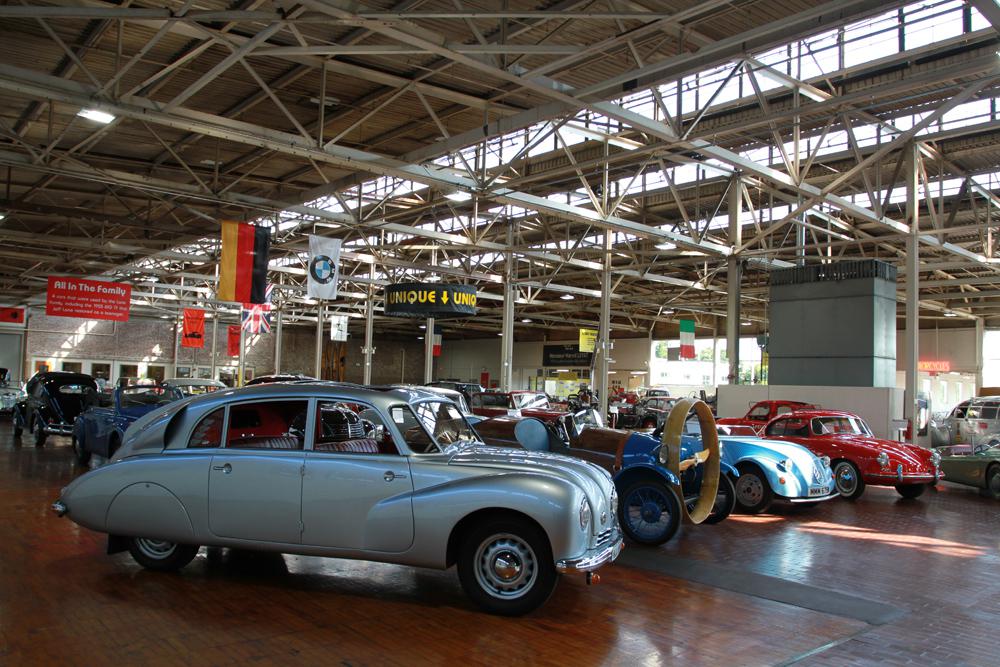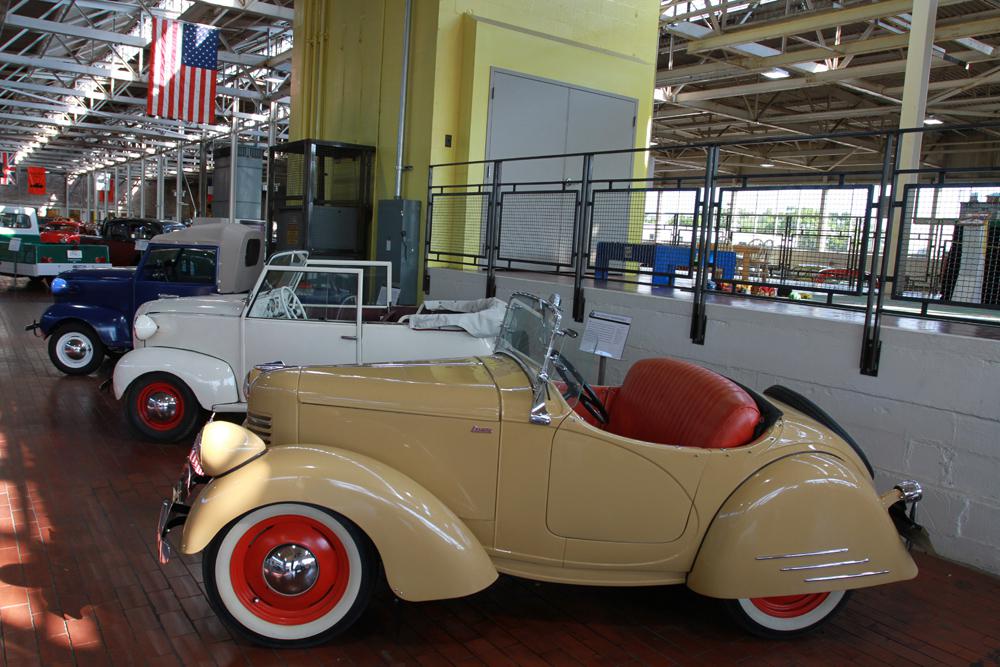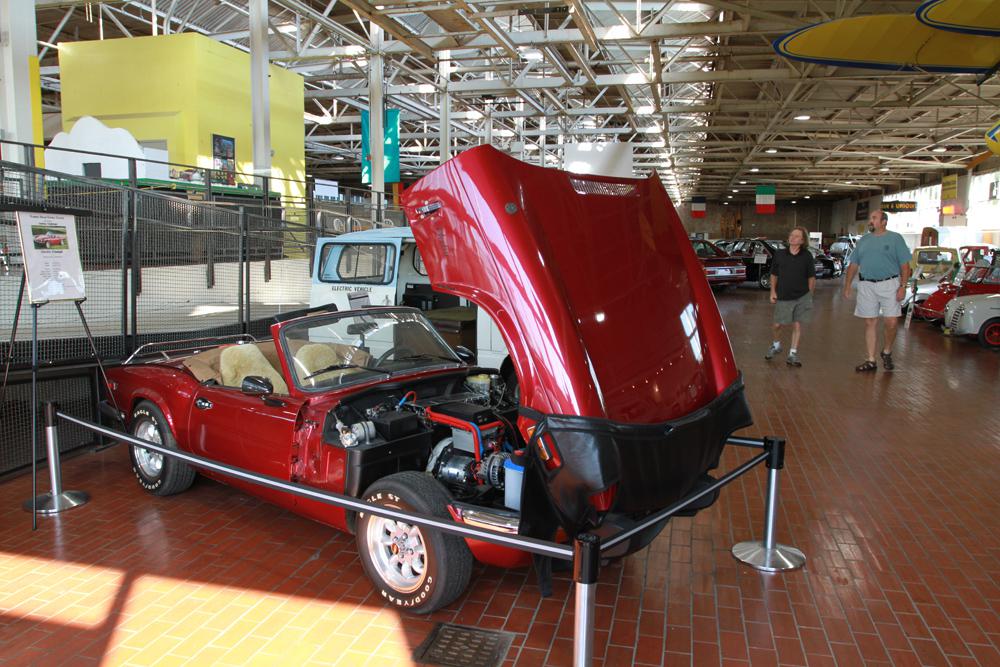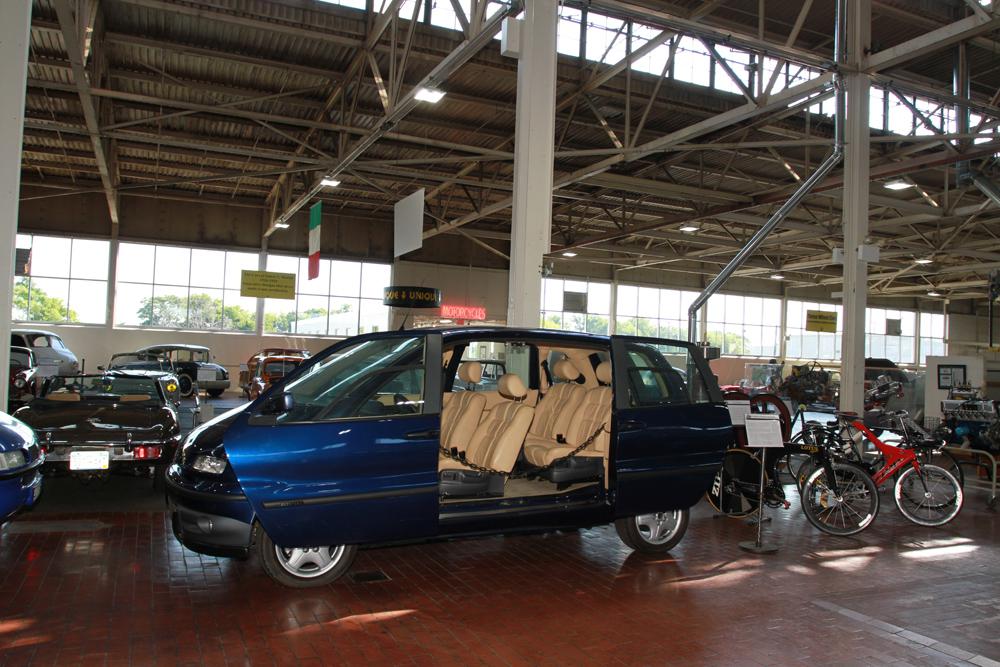

The Lane Motor Museum can be found at 702 Murfreesboro Pike in Nashville, Tennessee.

During our visit, the front line contained the collection’s 1982 Urba Centurion. Customers would buy a set of plans for just $17 and build their own. The build involves a Triumph Spitfire chassis and a three-cylinder Kubota diesel engine.

The museum has a large collection of Eastern Bloc cars, including this Czechoslovakian-built 1947 Tatra T-87. It was smaller, lighter and more powerful than the model it replaced, allowing top speed to reach 100 mph.

In the late 1980s and early ’90s, Nissan released four retro compacts to Japan. These Nissan Pike Factory cars, are named for the brand's special projects group. This Pao is one of four examples in the Lane's collection.

The Lane collection knows no boundaries as far as year of manufacturer or country of origin. This 1940 American Bantam Roadster can be found mixed in with their other small cars.

The 1956 Autonacional Biscuter 100 is one of the cars that helped put Spain back in motion following World War II as well as their own civil war. French engineer Gabriel Voisin designed the tiny two-place roadster.

Alternative fuel vehicles are featured, too. Rick Michaels built this electric Triumph Spitfire. Power comes from 10 12-volt batteries, and range is said to be 80 miles at 50 mph.

Unhappy with the failures of the Stanley Steamer and Doble steam cars, steam engineer H.R. Harris set out to build his own in the 1930s. No one is sure if this single example ever ran. The museum plans a restoration.

The museum has several three-wheeled cars, including this 1974 Reliant Robin.

This one-off 1951 Hoffman has its single wheel in the back—three-wheelers got a tax break. The steering swings the entire rear cradle, not just the wheel. The wide front track and short wheelbase make for tricky handling.

The Hoffman isn't the only unfulfilled dream found at the Lane. Otto Daus had plans to put this micro-sized two-seater into production. Just a single unit of the two-stroke-powered roadster was built.

This is the museum's replica of the 1942 Aeroluge, a Tatra-built transport designed to pass the snowy plains of Russia. The large cleated drum at the rear gets the vehicle moving; after about 10 mph or so, the propeller takes over.

In the 1920s, Martin had plans to produce an aerodynamic family car. However, production never met those dreams.

Amphicars are well known among collectors, but the 1992 Hobbycar Amphibian is a rarity. Only 52 were built. It was a forward-control four-seater. Hydrojets give it direction when wet. The windshield and dashboard are retractable.

In 1994, Hobbycar made the Passport: an office on wheels. Both side doors slide open, and there's a plug for phone and fax. This is the third of four Passports built before the company went into receivership in the mid '90s.

To celebrate Tommi Makinen's four consecutive WRC rally titles, Mitsubishi released this special Evo VI model for 2001. The Lane has one in their collection.

Late-model, limited-run cars are also featured. This this 2007 Renaultsport Megane 230 R26 honors Formula 1 driver Fernando Alonso.

Some kind of Porsche 356 variant? No, how about a 1959 Weidner Condor, another product of Hans Trippel, the man who designed the Amphicar. A fiberglass body covers a three-cylinder, two-stroke Heinkel engine.

Another 200 or so cars are stored in the basement. What's down there? Cars that have been rotated off the show floor as well as projects, new acquisitions and other treasures. Occasionally basement tours are offered to the public.

That's not a Formula Ford, it's a 1968 M.E.P. X27–think of it as a spec series for Citroen-powered formula cars. About 20 were built.

The Porsche 928 on the right is a recent donation. While it runs fine, it just needed some minor cosmetic work. While nearly all of the cars in the collection run, others are awaiting restoration.

The Lane maintains their own restoration shop. The body work in the foreground belongs to a Gyro-X, a two-wheeled car designed by Auburn, Cord and Duesenberg designer Alex Tremulis.

Not everything at the Lane is cute and cuddly. Their 1959 LARC-LX, a military amphibious transport, weighs in at some 100 tons. It can be found out back behind the building.

One of the LARC's victims can be found beside the massive transport. When you visit the Lane, make sure that you parked in a designated spot. Also, don’t forget to visit the gift shop.
The Lane Motor Museum marches to its own beat. Car collector Jeff Lane established the Nashville museum in 2002 with a simple rule: show cars that are technically significant or uniquely different. The museum doors were opened to the public in October, 2003, and the collection has swelled to some 400 vehicles. The museum’s home is interesting as well, as the cars are housed in the former Sunbeam bakery, complete with high ceilings, natural light and a brick and maple floor.
David Yando, the museum’s manager, served as our tour guide. The Lane Motor Museum can be found at 702 Murfreesboro Pike in Nashville, Tennessee. Their phone number is (615) 742-7445, while the web address is lanemotormuseum.org. Details on many cars in their collection can be found on the site, too.
View all comments on the CMS forums
You'll need to log in to post.